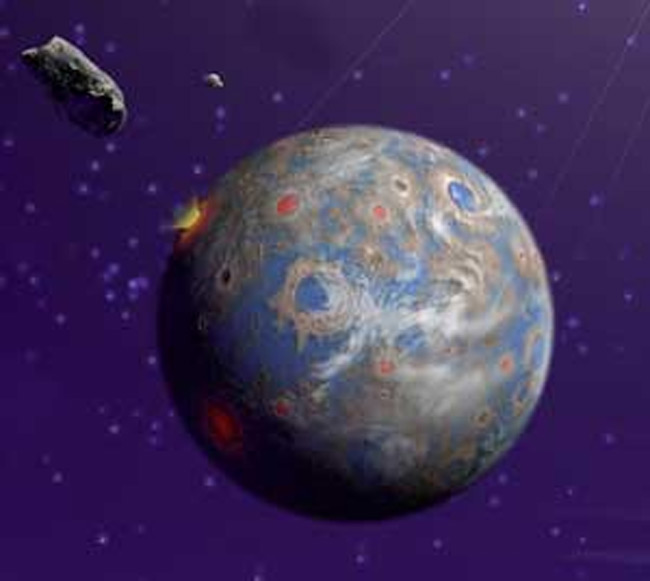NASA Imagines Earth-Like Worlds

Astronomershave yet to find an Earth-size planet beyond our solar system, but that hasn'tstopped them from modeling what these worlds might look like.
A newcatalog of 14 types of such planets, some fantastical, could help planethunters spot what has until now remained fictional.
Thecomputer models provide specs for 14 planettypes, varying according to mass, diameter, composition and where theworlds could be found in our galaxy. Some are made mostly of pure water ice,carbon, iron, silicate, carbon monoxide or silicon carbide, while others aremixtures of these various compounds.
?We?rethinking seriously about the different kinds of roughly Earth-size planets thatmight be out there, like George Lucas, but for real,? said Marc Kuchner ofNASA's Goddard Space Flight Center in Greenbelt, Md.
The workwill be detailed in the Oct. 20 issue of the Astrophysical Journal.
Planetspecs
Rather thanassuming farawayworlds around other stars would be big or small versions of planets in oursolar system, the astronomers considered all possible types of planets givenwhat they know about the composition of protoplanetary disks, the wells of rawmaterial that form around young stars.
Get the Space.com Newsletter
Breaking space news, the latest updates on rocket launches, skywatching events and more!
So far,most of the morethan 250 planets discovered beyond our solar system are huge, Jovian-likeworlds. So scientists know something about the range of possibilities withgiant planets, but they know next to nothing about possible Earth-like andpotentially solid or watery planets except what has been learned from our solarsystem.
?Wehave learned that extrasolar giant planets often differ tremendously from theworlds in our solar system, so we let our imaginations run wild and tried tocover all the bases with our models of smaller planets,? Kuchner said.
By modelinghow gravity would compress a planet of a certain composition and mass, theypredicted each planet's diameter, finding that no matter their composition, theplanets followed a similar relationship between massand diameter.
?Allmaterials compress in a similar way because of the structure of solids,?said study team member Sara Seager of MIT. ?If you squeeze a rock, nothingmuch happens until you reach some critical pressure, then it crushes. Planetsbehave the same way, but they react at different pressures depending on thecomposition.?
The team founda pure water planet weighing the equivalent of one Earth will span about 9,500miles across (15,289 kilometers), while an iron planet of the same mass will becompressed to a diameter of just 3,000 miles (4,828 kilometers). Earth, made upmostly of silicates, is 7,926 miles (12,755 kilometers) across at its equator.
Where inthe world ?
The teamalso provided rough guidelines for possible hideouts of the planet types.?We can make educated guesses about where these different kinds of planetsmight be found,? Kuchner said.
Forexample, carbon planets and carbon-monoxide planets might take up residencearound evolved stars such as white dwarfs and pulsars, or they might form incarbon-rich debris disks like the one around the young star Beta Pictoris.
With a slewof planet-hunting projects and missions launched or in the queue, theresearchers hope when astronomers start finding Earth-sizeplanets, these models will yield insights into planet compositions based onsize and mass information.
Snags inthe model, of course, have already emerged. While the models will work well indistinguishing between a pure water planet and one composed of iron, they couldmix up silicate planets with carbon planets, say the researchers. That'sbecause silicate and carbon planets have very similar masses at a givendiameter.
Observatoriesyet to launch, such as NASA's James Webb Space Telescope or Terrestrial PlanetFinder, could provide finer details to help decipher the chemical compositions.
- VIDEO: Planet Hunter
- Alien Worlds Through Artists' Eyes
- Top 10 Most Intriguing Extrasolar Planets
Join our Space Forums to keep talking space on the latest missions, night sky and more! And if you have a news tip, correction or comment, let us know at: community@space.com.










